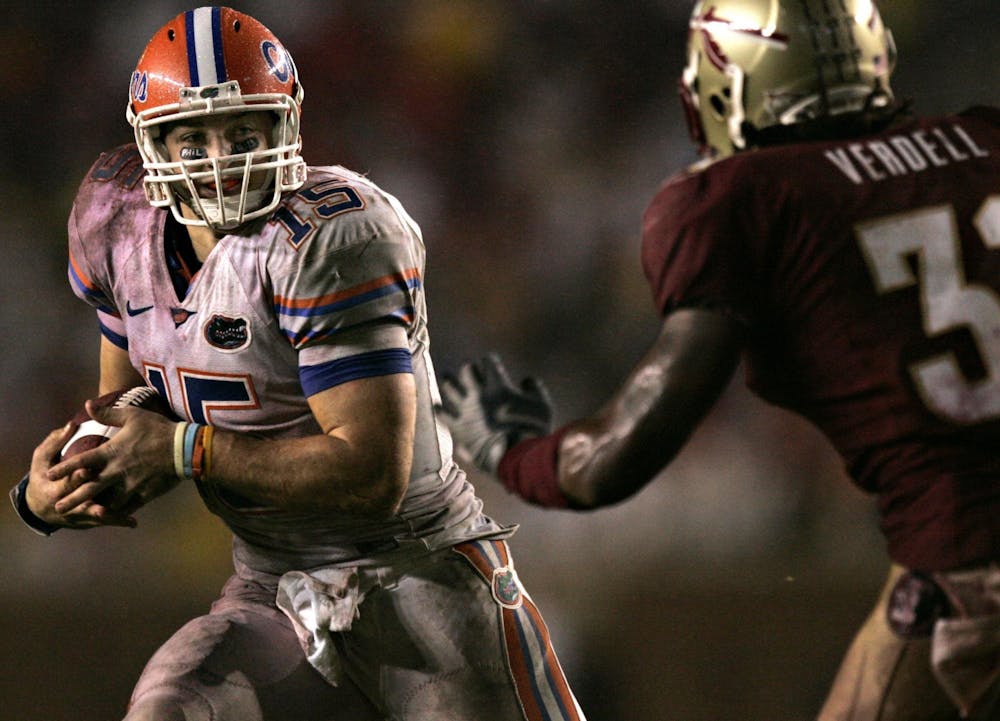ESPN released its top 11 college football players of all time during halftime of Monday’s College Football Playoff National Championship Game. The top 11 featured the network’s top 150 players in the sport’s 150-year history.
Per ESPN, the list was voted on by “The blue-ribbon panel of 150 media members, college administrators, and former coaches and players who accepted the responsibility of selecting the best players in the history of the game.”
Well apparently, none of the 150 members on the panel have actually watched college football in the last 30 years. Of the 11 players released to the public last night, the most recent person to actually play in a college football game was Barry Sanders, who finished his career in 1988.
That was 32 years ago.
The trend continues when looking at the full list. The first player listed that played more recently than Sanders was former University of Tennessee star quarterback Peyton Manning, who checked in at No. 21.
The first 21st century player doesn’t crack the list until Adrian Peterson at No. 45. The first player to play a game in the 2010s was Andrew Luck, who was ranked No. 64.
I understand the panelists' need to avoid recency bias. Society too often is quick to over-elevate recent success as the greatest of all time. However, this committee of voters went too far in the other direction: ignoring top players from the last three decades for the nostalgia of yesteryear.
A prime example is how the committee ranked quarterbacks. The only signal caller to crack the top 11 was Roger Staubach of the United States Naval Academy. While Staubach was a great player, statistically speaking it is laughable that he was voted as the best quarterback of all time.
It is hard to compare different eras, but when the statistics are so lopsided, the claim of “It was a different time,” flies out the window. It’s why I still consider John Wooden the greatest basketball coach of all time, and the 1960s Boston Celtics and the 1990s Chicago Bulls as the NBA’s two greatest dynasties of all time.
The same can be true with Staubach. Over his career, he threw for a total of 3,571 yards. Lamar Jackson — who somehow is not on the top 150 list — eclipsed that mark in just one season in 2017, as well as being just 28 passing yards shy of Staubach’s career mark in 2016. Even excluding Jackson’s roughly 3,500-yard advantage in rushing and having 84 more touchdowns than Staubach, it is completely fair and easy to argue who the better college quarterback was.
The same can be said with other recent quarterbacks who were severely undervalued. In his time at the University of Florida, Tim Tebow was a three-time Heisman finalist who won the award in his sophomore season. He also won two national titles and a Sugar Bowl at Florida.
Other than Archie Giffin, the only player to win two Heismans, there may not be a more decorated college player than Tebow. Yet instead of being near the top of the list, he was delegated to 76.
Similar arguments can be made for No. 81 Vince Young, No. 101 Deshaun Watson, No. 117 Marcus Mariota and No. 150 Baker Mayfield.
Yes, as a Louisville fan I am biased when it comes to Jackson. But leaving a Heisman winner and two-time finalist — the only player to pass for more than 3,000 yards and rush for over 1,000 yards in two separate seasons — off the top 150 entirely is arguably the most indefeasible part of the list.
The way these modern quarterbacks were undervalued is just mind-boggling. And while at the end of the day this is just a meaningless list, it’s still disappointing to see the voters emphasize nostalgia over production.






